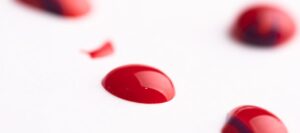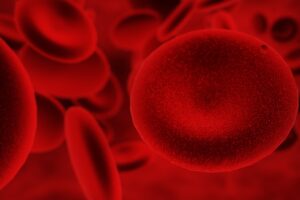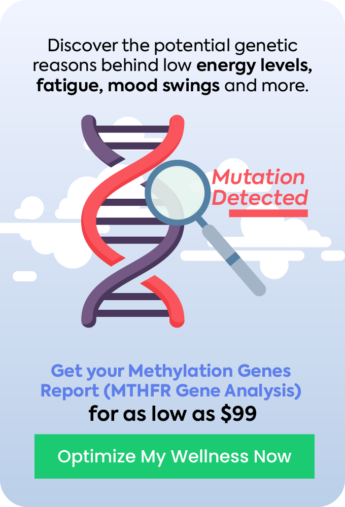The LifeDNA Fitness Report offers a personalized analysis of how genetic factors can shape an individual’s fitness journey.
Utilizing cutting-edge genomic science, the report provides insights into nearly 30 traits spanning aspects such as muscle composition, metabolism, injury risk, and exercise response.
This information can empower you to tailor your fitness routine and nutritional plans to be in sync with your genetic makeup.
Lactate Clearance
This refers to the body’s ability to remove lactate, a byproduct of intense exercise, from your muscles. Efficient lactate clearance can reduce fatigue and improve recovery after workouts.
The rs1049434 polymorphism in the gene coding for MCT1 was shown to be linked to the occurrence of muscle injuries among elite soccer players in a 2015 study. MCT1 is one of the lactate transporters and participates in the pH homeostasis during exercise. Insufficient lactate clearance can lead to muscle injuries.
Power vs Endurance
Power is the ability to exert maximum muscular contraction instantly in an explosive burst of movements, whereas endurance is the ability to sustain these efforts over time.
Individuals’ genetic makeup plays a crucial role in determining their natural inclination towards power or endurance-based activities. The presence of the ACTN3 R577X polymorphism, especially the RR genotype (marked by rs1815739-CC), has been linked to enhanced muscle strength and power among athletes, highlighting the impact of genetics on athletic performance in power-oriented sports.
Read in more detail: Decoding the Genetics of Power vs. Endurance
Aerobic Capacity
This measures the maximum amount of oxygen your body can use during exercise. Higher aerobic capacity improves endurance and overall fitness.
Grasping the genetic basis of aerobic capacity helps explain why people respond differently to aerobic training. Research from 2014 indicates that the PPARGC1A gene, particularly its rs8192678 C>T (Gly482Ser) variant, influences the effectiveness of an individual’s response to aerobic exercise.
Read in more detail: What Does Genetics Tell About Your Aerobic Capacity
Muscle Strength
This refers to the maximum force a muscle or group of muscles can exert against some form of resistance in a single effort.
The CKM gene, responsible for producing the creatine kinase M protein, facilitates the transformation of creatine into phosphocreatine, essential for replenishing ATP (adenosine triphosphate) used up during muscle contraction. The rs8111989-C variant of the CKM gene can influence the function and production of creatine kinase M in muscles, leading to enhanced muscle strength.
Several other genetic markers can influence how well you can lift weights. Read in more detail in this article: Unlocking the Genetic Secrets of Muscle Strength
Weight Loss and Exercise
Regular exercise helps burn calories and build muscle, both of which are important for weight loss and maintaining a healthy weight.
The FTO gene is widely researched in connection with weight fluctuation. Various genetic variants in this gene are associated with a higher likelihood of obesity and challenges in sustaining a healthy weight. Those with particular variants inthe FTO gene may experience more difficulty in managing their hunger and regulating how much they eat.
We address the mechanics of the FTO gene in this article: How Your Genes Influence Weight Change
Also read: The Genetics Of Saturated Fat Metabolism
Blood Pressure & Exercise
Regular physical activity can help lower high blood pressure and reduce the risk of hypertension.
Research indicates that a specific genetic variant (rs5370) in the EDN1 (endothelin 1) gene is associated with an increased risk of high blood pressure, particularly in individuals with lower fitness levels.
Read about more genetic markers related to blood pressure in this article: From Genes to Cardiovascular Health: Understanding Blood Pressure and Exercise
HDL Cholesterol & Exercise
Exercise can boost levels of HDL cholesterol, the ‘good’ cholesterol, which helps reduce heart disease risk.
Gene polymorphisms in peroxisome proliferator-activated receptors (PPARs) and their coactivators, particularly PPARGC1A and PPARGC1B, have a notable connection with how people respond to aerobic training. Research has shown that individuals with certain variants of these genes may experience unique responses to aerobic exercises.
Read in more detail: The Science Behind High-Density Lipoprotein: Genetics and Exercise Insights
Insulin Sensitivity & Exercise
Regular exercise can improve insulin sensitivity, which can be beneficial for managing blood sugar levels, especially in people with type 2 diabetes.
Explore our in-depth analysis of the link between genetics and insulin sensitivity in this article Genetic Insights into Insulin Sensitivity and Exercise
Motivation to Exercise
This involves the desire or willingness to engage in physical activity. Motivation can be influenced by various psychological and environmental factors as well as genetics.
A 2012 study on the NOS3 +894 G>T polymorphism (rs1799983) found that it affects physical activity levels and muscle strength response to resistance training.
Exercise Heart Rate Recovery
This is a measure of how well your heart rate recovers after exercise, which can indicate cardiovascular fitness and endurance.
Injury Predisposition
This refers to one’s susceptibility to injury from a workout, which can be influenced by factors like genetics, muscle strength, and flexibility.
A 2017 meta-analysis of six studies involving 933 cases and 1,381 controls v revealed that the rs1800012 SNP in a collagen gene COL1A1 is significantly associated with a decreased risk of sports-related tendon and ligament injuries, particularly ACL injuries, with the TT genotype potentially serving a protective role.
Hand Grip Strength
This is a measure of the strength in your hands and forearms. It’s a good indicator of overall muscle strength.
In 2017, a comprehensive GWAS involving 195,180 individuals identified 16 genetic loci linked to hand grip strength were identified, implicating genes related to muscle structure, neuronal functions, and psychomotor impairment. The study offered new insights into the biological mechanisms of muscular strength and its impact on age-related health issues.
Bone Density & Fracture Risk
Bone density refers to the strength of bones, with higher density indicating stronger bones and lower risk of fractures.
A large genome-wide association study (GWAS) using UK Biobank data identified 1,362 independent SNPs linked to bone mineral density, leading to the development of a genetic algorithm that, when combined with physical factors like height, weight, age, and sex, significantly predicts the risk of osteoporosis and fractures.
Testosterone
A key male hormone, also present in females, that affects muscle mass, bone density, and red blood cell production.
Testosterone levels in the body are influenced by a complex interplay of multiple genes and genetic markers, rather than a single gene dedicated to regulating testosterone. Various genetic factors can impact the production, regulation, and sensitivity of testosterone. Notably, several genetic variations in the SHBG (sex hormone-binding globulin) gene locus on chromosome 17 are associated with significant fluctuations in testosterone levels and a heightened risk of low testosterone. The rs6258 polymorphism in the SHBG gene, for instance, influences how testosterone binds to SHBG, affecting the availability of free testosterone in the body.
Read in more detail: Testosterone Genetics: Insights into Male Hormonal Traits
Post-Exercise Recovery Rate
This indicates how quickly your whole body recovers after exercise, including muscle and tissue repair and return to resting heart rate.
The TNFA G-308A (rs1800629-A) genetic variant significantly influences how the body recovers after intense exercise. This variation affects the systemic response of creatine kinase (CK), a crucial indicator of muscle damage, during strenuous physical activity. People with the TNFA G-308A genotype may show different CK activity following intense exercise.
Explore this in more detail in our article, A Comprehensive Genetic Guide to Post-Exercise Recovery Rate
Exercise-Induced Ischemia
This refers to reduced blood flow to the heart during exercise, which can cause chest pain or discomfort.
A large 2014 systematic review of nearly 30 case-control studies (including 8,901 cases and 12,623 controls) revealed a significant association between the MCP-1 A-2518G polymorphism and increased risk for both IHD and IS across various genetic models (dominant, allelic, recessive, and additive).
We discuss several other genes and SNPs in our article, Exploring Genetic Factors in Exercise-Induced Ischemia
Circadian Rhythm
This is your body’s internal clock that influences physical, mental, and behavioral changes in a roughly 24-hour cycle, affecting sleep, hormone release, and even exercise performance.
Studies have identified specific genes, such as CLOCK, PER1, PER2, and PER3, closely associated with regulating circadian rhythms. Read our full article on The Genetics of Circadian Rhythm.
Unlock all LifeDNA Fitness Traits now.











